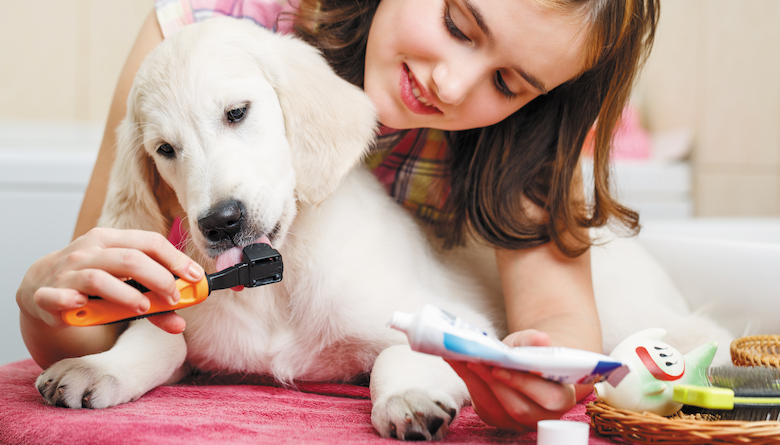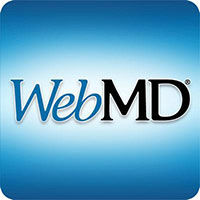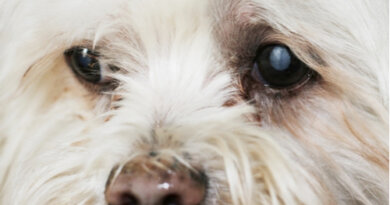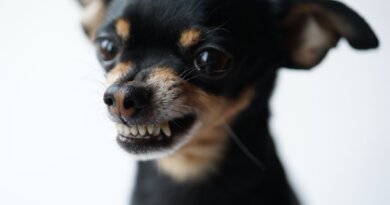Why Do Dogs Need Their Teeth Brushed?
Why do dogs need their teeth brushed? Two words: doggie breath. But that’s just one reason — and a mild one. Poor oral health can take a bite out of your dog’s well-being, causing tooth loss, mouth sores, pain that limits ability to eat and infections that can lead to heart, liver and kidney disease.
Sometimes there are no signs of dental trouble until it takes root. And it doesn’t take long. Dental disease can start in dogs as young as 2, and some statistics show it affects as many as 80% of dogs older than 3.
Signs of Dental Disease: Bad breath; broken or discolored teeth; tooth loss; ted or swollen gums; avoiding chewing or eating; weight loss
When plaque attack
Unfortunately, plaque buildup happens quickly. Periodontal disease (gum disease) starts with the filmy, bacteria-filled substance that sticks to the surface of teeth within hours of eating. In only a few days, that plaque can harden into tartar (calculus) above and below the gumline, causing damage to the bone and soft tissue around teeth.
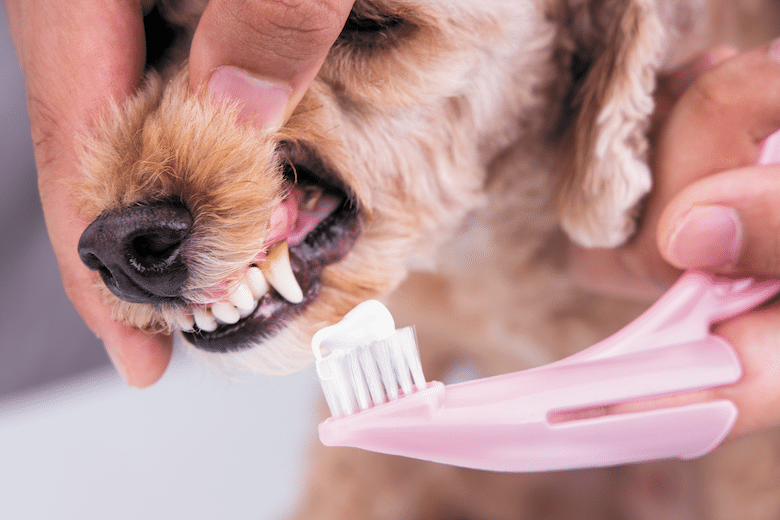
Toy and small dogs, Brachycephalic (short-nosed) dogs, senior dogs and dogs with compromised
immune systems are prone to dental disease. Photo: ThamKC | Getty Images
Fortunately, it also doesn’t take long to brush a dog’s teeth: one minute a day. Yet fewer than 10% of people brush their canine’s canines regularly. Busting some myths helps explain why you should:
A dog’s mouth is cleaner than a human’s mouth, right? Wrong. This myth might have originated from the fact that zoonotic diseases (those transmitted from dogs to humans) are relatively rare compared to the myriad illnesses humans contract from each other through saliva. But that rarity is due, in part, to dogs and humans having only about 5% of the same mouth bacteria. And let’s admit that dogs eat and lick all kinds of gross things.
Wolves don’t brush their teeth, so dogs don’t need their teeth brushed either, right? Wrong again. The dog’s wild canid cousins eat a different diet from domesticated dogs, including hard things like raw bones and tree bark that help scrape teeth clean. In addition, many of the processed foods and treats pet dogs eat contain carbohydrates (sugar) — sometimes as much as 70%. And bacteria feed on sugar. What’s more, wolves live an average of 6 to 8 years compared to 10 to 13 years for dogs, so a wolf’s teeth experience less wear and tear and don’t have to last as long.
A dog’s instinct to lick his wounds proves that dog saliva is healthy, doesn’t it? Not quite. While a dog’s saliva contains some anti-bacterial enzymes, much of the healing that results from licking is because it cleans the wound and stimulates new cell growth.
Dog saliva contains fewer bacteria than human saliva, correct? Nope. Dog and human mouths house about the same number of different types of bacteria (around 600). While dog saliva is more alkaline than human saliva, any dark, moist, warm environment like the mouth is an ideal breeding ground for bacteria.
Brush up on brushing
Not sure how to brush your dog’s teeth? Here are some tips to get you started. Try to start young (dogs generally have their adult teeth by 30 weeks), and acclimate your dog to brushing in stages and brief sessions:
- Start by touching the teeth and gums with your fingers.
- Next, touch the brush to his teeth.
- Let your dog taste a bit of the toothpaste.
- Brush in circles slowly and gently along the gumline and teeth.
- Focus on outer surfaces but, if possible, brush all teeth surfaces.
- Brush for 30 seconds on each side.
- Praise your dog throughout, and offer a reward when done.
- Rinse brushes well, replace every few months and do not share among dogs.
Tools with teeth
Toothbrushes should have soft bristles, and the head should be an appropriate size for your dog’s mouth. Dog toothbrushes include ones with angled heads, long handles and multiple heads of differing sizes. Finger brushes fit on the end of your finger, and three-sided brushes clean all tooth surfaces at once. You also can use a child’s toothbrush or a strip of gauze around your finger. Brush bottom and top teeth, starting in the front and moving to the back.
Unlike you, your dog will swallow the toothpaste, so always use toothpaste formulated for dogs. Canine toothpaste comes in flavors that appeal to dogs, like bacon, beef, chicken, peanut butter and salmon. Never use baking soda (it can cause digestive upset) or human toothpaste (some are high in sodium and some contain xylitol, which is toxic to dogs). Ask your veterinarian, and look for the Veterinary Oral Health Council seal on products.
Brush off
In addition to brushing, these products can help reduce plaque and tartar:
- Dental and teeth wipes
- Dental-formula dog foods
- Oral-hygiene treats and enzymatic chews
- Dental-care water and food additives
- Oral gels, sprays and foams
- Textured, rope and floss chew toys
Give your dog something to smile about by keeping his pearly whites white while preventing or slowing oral disease. If you’ve been brushing aside brushing, now is a great time to start: February is National Pet Dental Health Month.
Top photograph: luriiSokolov | Getty Images

